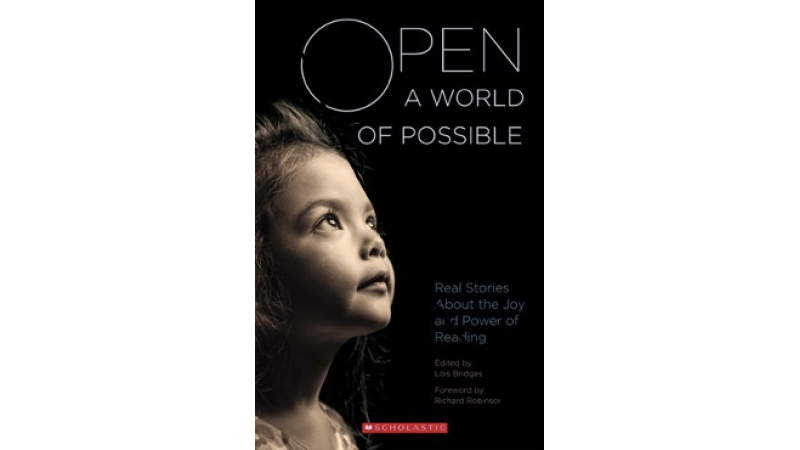 A major part of librarian-ing here at Scholastic is answering reference questions and doing research for our colleagues who are working on books, magazine articles, education programs, and industry presentations. One of the projects we helped out with this year was The Joy and Power of Reading: A Summary of Research and Expert Opinion, written by Lois Bridges Ph.D., a companion work to Open a World of Possible: Real Stories About the Joy and Power of Reading.
A major part of librarian-ing here at Scholastic is answering reference questions and doing research for our colleagues who are working on books, magazine articles, education programs, and industry presentations. One of the projects we helped out with this year was The Joy and Power of Reading: A Summary of Research and Expert Opinion, written by Lois Bridges Ph.D., a companion work to Open a World of Possible: Real Stories About the Joy and Power of Reading.
In the introduction Bridges explains,
“This research compendium aims to showcase decades of reliable reading research to support you in your ultimate aim as an educator and parent: to help all children become proficient, avid readers who bring passion, skill and a critical eye to every reading encounter.”
Helping with this called upon all of our librarian/Boolean searching skills! However, this document truly reflects the research compiled by many different departments here working together. In the library, to support projects like this, we subscribe to several databases and periodicals, in print and online, and we maintain a reference collection with award-winning children’s literature and nonfiction materials for adults. Like all reference librarians, we learn something new with almost every query that we take on – which is pretty cool, and intellectually stimulating for a nerd such as me!
Looking back on 2014, I put together a list of five interesting research articles published this year; these papers build on previous studies, and they ask us to think innovatively about how to approach math, science, reading, multiliteracy, and readers’ advisory. Since they are not all open access, at the end of each summary there is a link to a full-text/peer-reviewed search that I ran on ERIC (one of our go-to sources) so that you can check out some of the pre-2014 research that set the stage for these works.
Here are the first two:
An, Song A., Daniel A. Tillman, Rachel Boren, and Junjun Wang. 2014. “Fostering Elementary Students’ Mathematics Disposition through Music-Mathematics Integrated Lessons.” International Journal for Mathematics Teaching & Learning, September, 1–19.
- For this study, two third grade classes, with a significant number of English language learners in each group, learned mathematics, but one class had music significantly integrated into the curriculum, while the control group used the textbook adopted by the district and traditional methods of instruction. Some of the learning activities the students working with music participated in included composition, playing music, graphic notation, designing instruments, and solving math problems based on their own musical works. In this class, confidence improved and the third graders had a more positive attitude regarding the usefulness of mathematics and their own success with it. This study shows that mathematics teachers can link their content knowledge with the arts, and proposes “an alternative way to design and teach an effective lesson” (13). MORE ON THIS TOPIC
Boche, Benjamin. 2014. “Multiliteracies in the Classroom: Emerging Conceptions of First-Year Teachers.” Journal of Language and Literacy Education 10 (1): 114–35. FULL TEXT AVAILABLE ON ERIC
- Boche worked with five first-year secondary English teachers that graduated from the same education program, using interviews, observations, questionnaires, and their teaching materials, to measure their experiences implementing multiliteracies into the classroom. “To these teachers, the definition of literacy has expanded to being adaptable to different situations” (127); and their teaching situations include an afterschool program, a middle school with class sizes of 40-50 students, a middle school with a mandated curriculum outline focused on testing, a high school in a mining town, and a high school dedicated to environmental studies (with a connection to the local zoo!). The experiences of these five individuals take me back to my own first year behind the desk, and their successes and failures offer ideas for English teacher preparation and practice; one example, pre-service collaboration with adolescents on multimedia projects and curriculum design. MORE ON THIS TOPIC
Enjoy!
And tune in on Monday for three more research leads – in the areas of readers’ advisory, graphic novels, and science...



